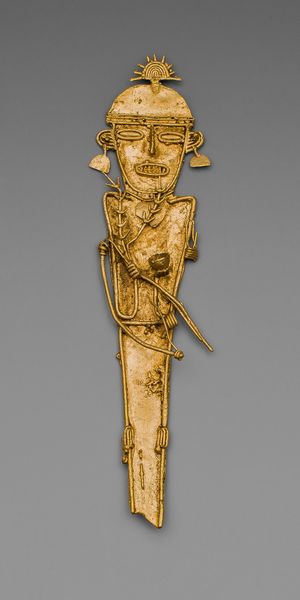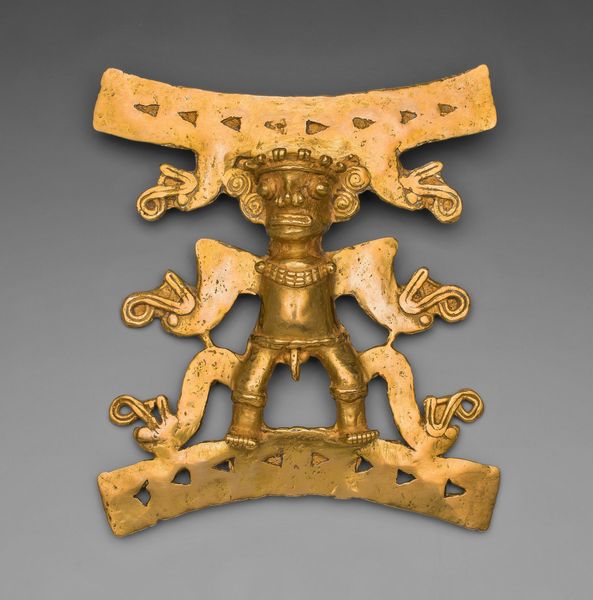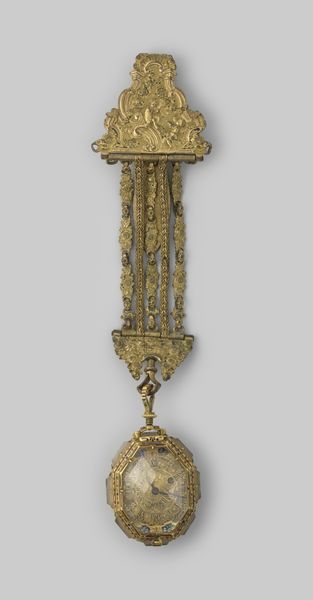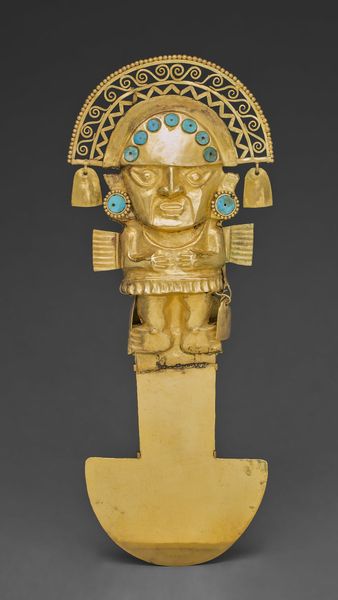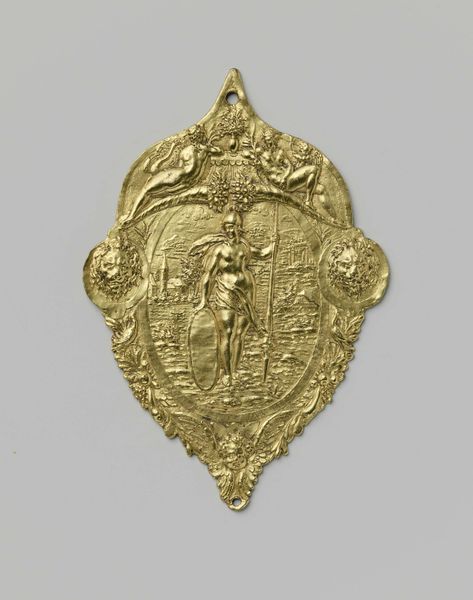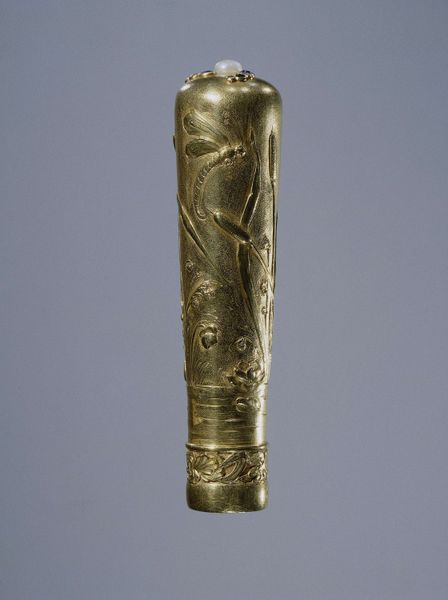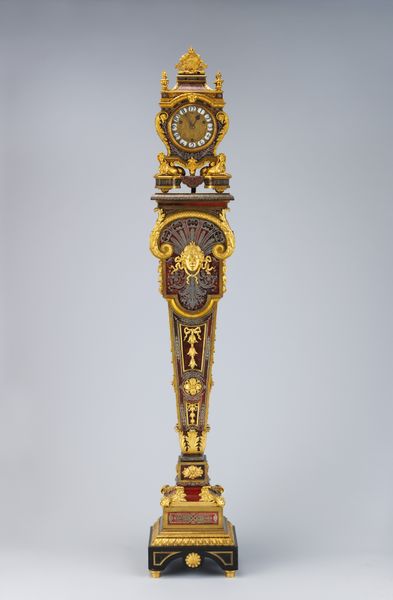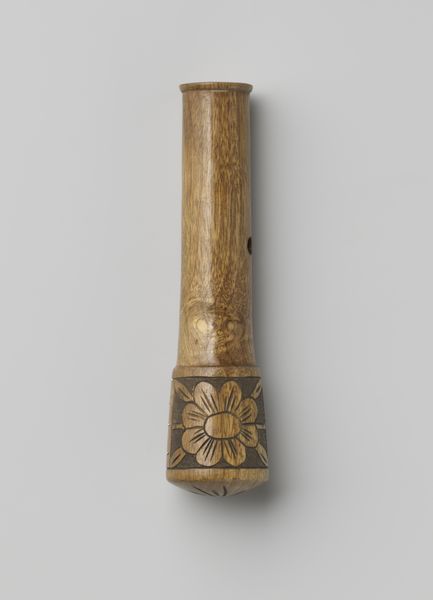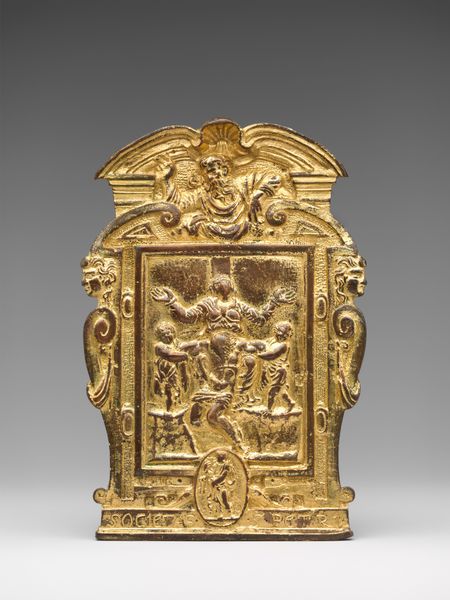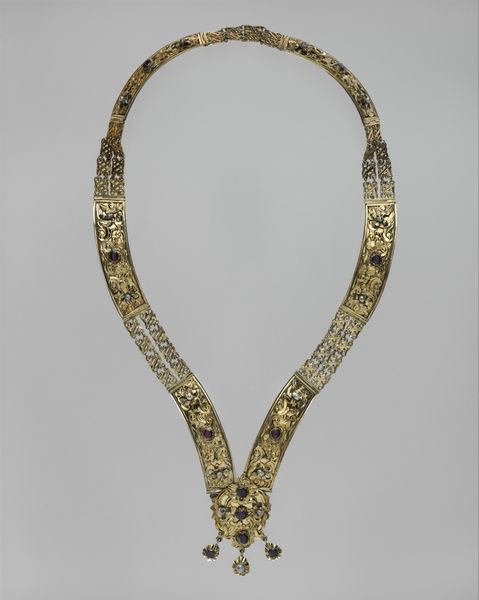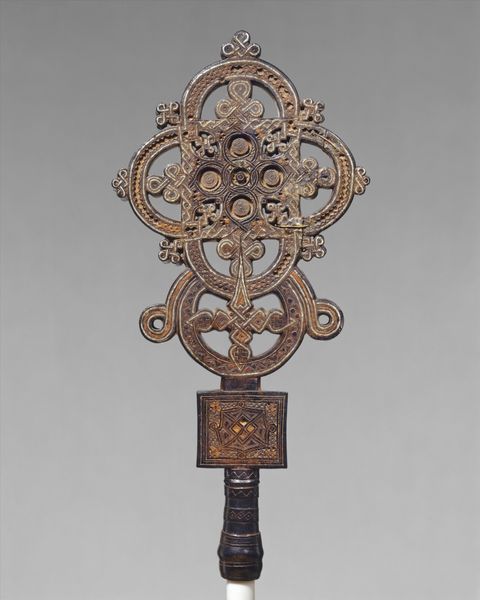
Figurine (Tunjo) of a Standing Figure with Crossed Bands Covering Torso Possibly 1000 - 1500
0:00
0:00
metal, gold, sculpture
#
metal
#
gold
#
figuration
#
sculpture
#
indigenous-americas
Dimensions: H. 8.9 cm (3 1/2 in.)
Copyright: Public Domain
Curator: I find myself drawn to the intense directness in this piece, a Muisca "Tunjo" figurine currently held at the Art Institute of Chicago. Likely crafted between 1000 and 1500 AD, it presents a standing figure adorned with crossed bands, all rendered in shimmering gold. Editor: My first impression is of stark simplicity. The elongated face, the almost skeletal frame created by those bands...there's a pronounced visual tension between the radiant material and the somewhat severe presentation. It's unsettling and fascinating all at once. Curator: That tension resonates, certainly. Tunjo figurines weren't mere ornaments; they served as votive offerings, mediating between the human and spirit worlds. Their placement within sacred spaces – caves, lakes – spoke volumes about the political structures within the Muisca confederation, reflecting both individual hopes and broader societal beliefs. Editor: The crossed bands are incredibly striking. What do you think they signify? Protection? Perhaps a ritualistic binding? The bird perched on one hand...it almost feels like a visual metaphor for freedom coexisting with restraint. Curator: Precisely! Iconography leads us down complex pathways. The bands may represent social status or stages of initiation within a specific social rank. Birds in Andean cosmology, as throughout the Americas, are considered messengers of the gods. This positioning likely communicates this figure’s unique spiritual authority and relationship to cosmic forces. Gold, of course, amplifies these significations. Editor: Gold—a symbolic material with real-world value that fed European desires during colonization. It adds a sad layer to understanding the power dynamics implicit in the very existence of such a delicate artifact now residing far from its place of origin. How does it resonate with current Latin American heritage discourses? Curator: That’s vital to consider. These “Tunjos” became casualties, melted down or pilfered as colonial powers extracted wealth. Displaying them now requires museums to actively engage in ethical repatriation discussions and support indigenous communities asserting their cultural patrimony. Editor: Absolutely. Beyond the aesthetic qualities, remembering these objects as active agents within larger political and religious events urges a profound respect. It invites consideration about continuity, legacy and about the violence implied in the appropriation of these cultural treasures. Curator: Looking closer at the construction – the fineness of the goldwork, the almost mathematical precision of the geometric designs – allows one a tangible connection to that living cultural history. Editor: Yes, its symbolic weight carries long and far. It's been enlightening to appreciate the figurine as an evocative intersection between personal narrative, cultural significance and critical questions related to global patrimony.
Comments
No comments
Be the first to comment and join the conversation on the ultimate creative platform.
